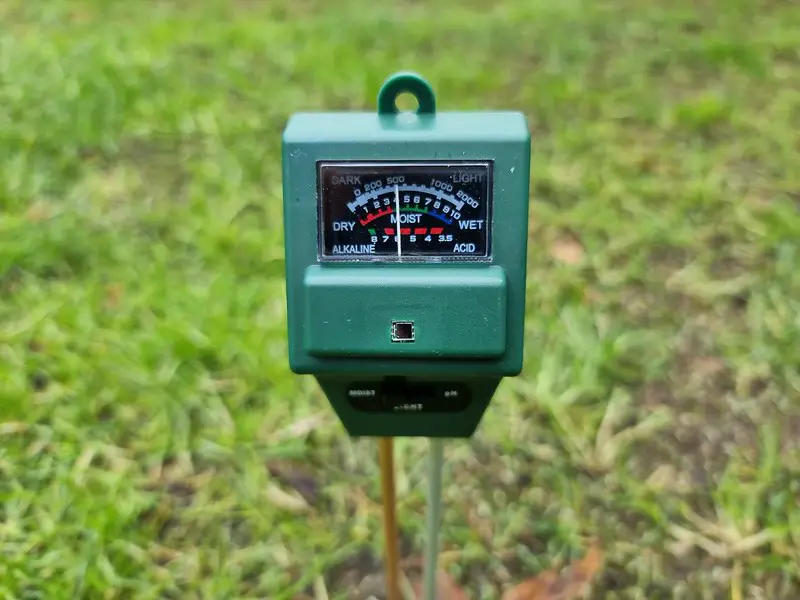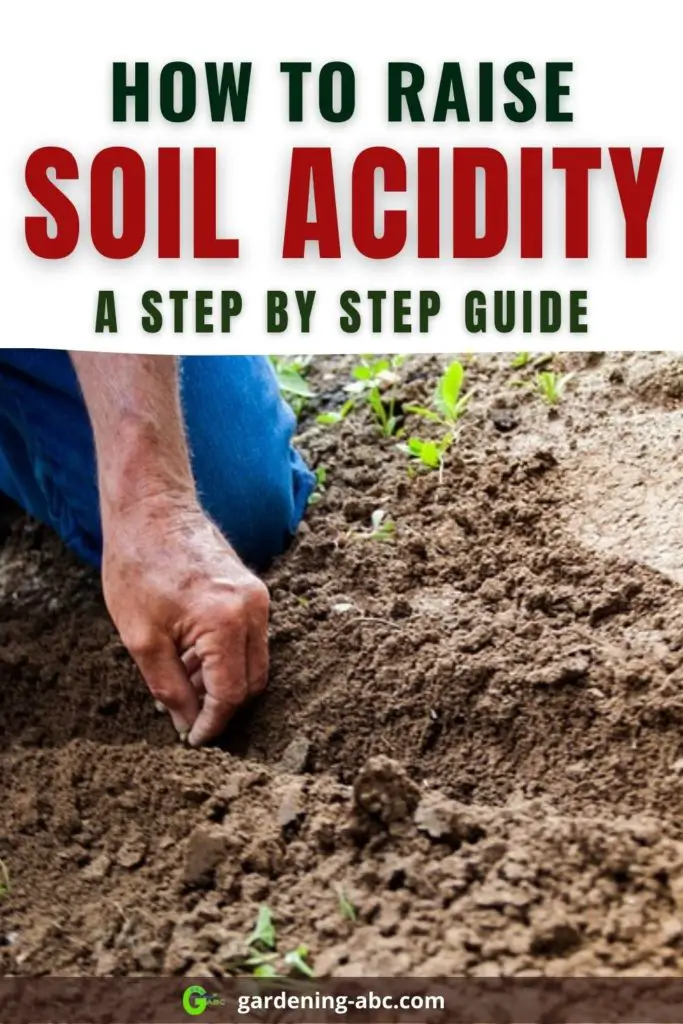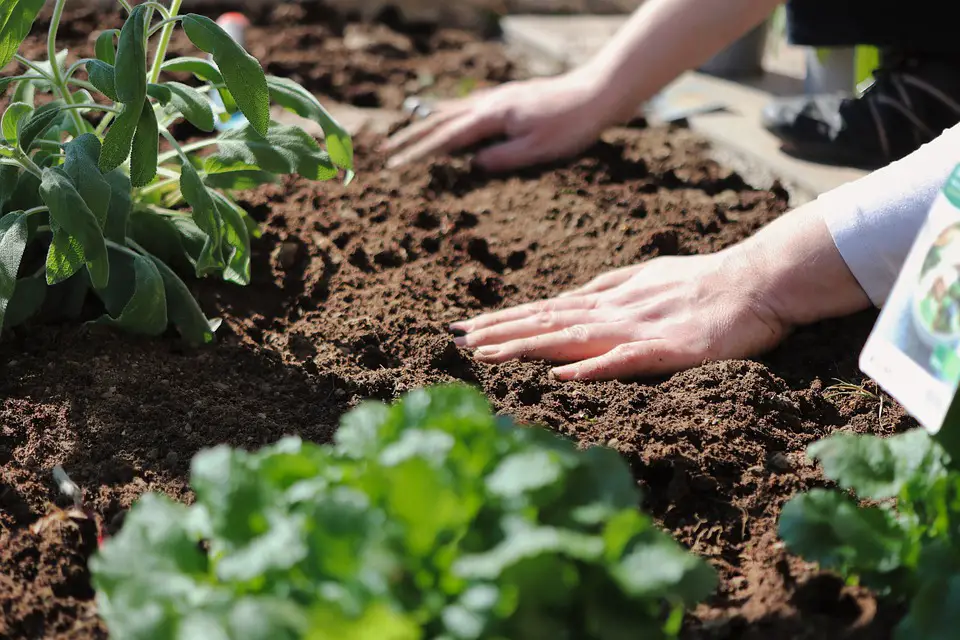We use affiliate links to run our site. When you buy through links on our site, we may earn an affiliate commission, without any added cost to you. Learn more
Keeping your soil acidic can be a bit challenging because whenever you add water to the soil it increases the soil pH. Also, various calcium and magnesium salts that are present in the soil breaks down and increases alkalinity.
So, today we will discuss how to raise the acid level and some useful methods of lowering soil pH. If you want to increase your soil pH and want to reduce the acidity in the soil you can read this post for details.
Why Reduce Soil pH:
There are mainly two reasons why you want to increase the acidity in the soil:
- One is if you want to grow some specific plants that thrive under acid conditions,
- and secondly, if the soil is just too alkaline in general and not suitable for growing any plant.
Test Your Soil:
Only a soil test for pH can indicate whether your soil pH is ‘right’ for growing the plants that you want to grow. Veggies, ornamentals, perennials, or flowers all have tolerance for a wide range of soil pH levels. Plants such as blueberries or rhododendrons need a soil pH of 5.5 or less to grow successfully and the alkalinity of soil can really kill them.
Do a soil test to measure your current soil pH level. Remember higher the pH lower the acidity level of the soil.
Digital soil pH testers like these are easy to test your soil pH. These have a pH electrode built in them to display soil pH with greater accuracy than pH test strips.
In general, it is always better to reduce soil pH before planting sensitive landscape ornamentals, rather than attempting to reduce soil pH after plants have become established.
Also, refrain from lowering the pH of soils that contain free calcium carbonate. It can neutralize any acids the amendment produces.
So you will end up with more acidifying amendments just to neutralize all the calcium carbonate. Here the best solution would be to grow plants that tolerate alkaline soils.
How To Reduce The Soil pH:
If you want to raise the acidity of your soil there are a couple of ways to do it.
- By adding organic materials to the soil.
- By adding chemicals to your soil.
Reduce Soil pH By Adding Organic Matter:
One of the easiest ways to increase the acidity in your soil is by adding lots of organic materials to your soil. Followings are some of the things you can mix with the soil to make it more acidic.
- Peat Moss
- Compost
- Compost Tea
- Mulch
- Elemental Sulfur
- Coffee Grounds

Sphagnum Peat Moss:
Peat moss is a great choice for reducing overall soil pH. It is an excellent choice for growing acid-loving plants and is also easy to incorporate into the soil. A 2-3 inches layer of peat on top of the soil will gradually reduce the soil pH as it will sink into the layers underneath.
As peat moss can hold a lot of water be careful about using it in clay soil.
Well-rotted Compost:
Compost gradually reduces the pH of the soil. Amending your soil with compost is by far the best way because it reduces soil pH over time, adds beneficial micro-organisms into the soil and builds nutrient-enriched soil for the plants. It will also improve the overall soil structure.
Compost Tea:
Compost tea is a finer version of compost. You can use this to lower your soil pH. Use this compost tea recipe to make compost tea for your garden. It is also a great way to feed your plants with fast-acting nutrients.
Mulch:
Use organic mulch to increase the soil acidity. Using pine needles to prepare mulch can give you a quick reduction in soil pH. As the needles break down gradually, it makes the soil more acidic. You can also use this mulch to retain soil moisture, suppress weeds, regulating soil temperature or preventing soil erosion.
Elemental Sulfur:
One of the most popular ways to make the soil more acidic is with elemental sulfur. They are very soluble in water and can increase the acidity of any soil very quickly. As sulfur is an essential nutrient in plant nutrition it can bolster disease resistance in plants.
Soil bacteria use this sulfur to combine with oxygen and water from the soil and produce sulfuric acid. Make sure your soil is warm, moist, aerated for the bacteria to work properly.
To increase the speed of the process mix the sulfur with the soil and don’t just leave it on the soil surface. It can take up to a year before the process of lowering the pH gets completed.
The elemental sulfur is quite economical, particularly if you want to apply it in a large area.
Coffee Grounds:
Use the coffee grounds once you have finished your coffee to lower the soil pH in your garden. You can either use them directly or can add them to your compost pile. Once they break down they will increase the acidity in your soil.
Although you can add any organic matter like compost, manure etc., sphagnum peat moss and pine bark mulch are particularly effective in reducing the pH of the soil.
Ammonium Fertilizers:
You can also use things like urea, ammonium nitrate, and ammonium sulfate to increase soil acidity. Bacteria in the soil convert ammonium into acidic compounds.
The good part of using ammonium fertilizers is they simultaneously fertilize your plants and acidify the soil.
One of the drawbacks of using ammonium fertilizers is they add too much nitrogen to the soil. So to counter this problem use these only to make gradual changes to the soil pH.
Ammonium fertilizers like ammonium sulfate, urea or ammonium nitrate, are best at maintaining acid soil conditions, but they will not be very effective in significantly reducing soil pH especially in a larger area.
Adding Chemical Compounds Like Aluminum Sulfate:
Aluminium sulfate lowers soil pH faster than other organic options. This is because the reactions here are chemical and not biological. But it also carries the risks of applying too much aluminium into the soil if you use it excessively.
Which One to Use:
The choice of material you should use to lower the soil pH depends on how fast you want to change the pH and the type of plants you are planning to grow on the soil. When selecting the best method of acidifying your soil, consider:
- How much you want to lower the pH?
- Which soil amendment you want to use?
- How quickly do you need to change the soil pH?
- How much money you can spend to get to your desired result?
Organic materials is a good option if you have a smaller garden. As it needs a little bit of effort and is a touch expensive, this method is not suitable to reduce soil pH in larger areas.
Sulfuric acid can reduce soil pH very fast, but it is very dangerous and not safe for home gardeners. It should be used only on rare occasions such as in reducing soil pH around large, established trees and that too with caution.
You can use Aluminum sulfate and soil sulfur. Aluminum sulfate is faster acting than soil sulfur as it dissolves fast.
Maintaining Your Soil Acidity:
You should keep a vigil eye on maintaining the correct pH level. It can be a constant struggle for gardeners to maintain the correct levels of acidity in garden soil.
Test your garden soil periodically with a pH soil tester. Use the scale to see the current pH level and if required amend as mentioned earlier.
Use rainwater as far as possible. Building a rain garden can be a very effective in keeping the soil pH low.
Avoid hard water, it will increase the pH.
Caution:
Most plants do best in slightly acid soil, pH 6.0-6.5. So lowering soil pH needs care because soil pH levels below 6.0 begin to be detrimental for many plants.
Although plants like blueberries or azaleas thrive in soil pH as low as pH 4.5, pH levels lower than this will be detrimental to them as well.
Like the post. Don’t Forget To PIN IT.

Amazon and the Amazon logo are trademarks of Amazon.com, Inc, or its affiliates.

Hi there! My name is Prasenjit and I’m an avid gardener and someone who has grown a passion for growing plants. From my hands-on experience, I have learned what works and what doesn’t. Here I share everything I have learned.
